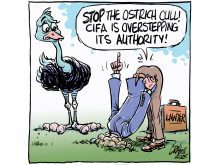THE federal government is again pushing a species-at-risk bill through
the House of Commons. This being the third attempt, one would think
they would have got the message about offering landowners fair
compensation for protecting sensitive habitat.
Sadly, that is not the case.
In fact, the current bill promises only that compensation levels will
be worked out later. The Liberals are telling farmers to take it on
faith.
But farmers have cause to be skeptical. When discussing the farm
Read Also

Budget seen as fairly solid, but worrying cracks appear
The reaction from the agriculture industry to prime minister Mark Carney’s first budget handed down November 4th has been largely positive.
income crisis a year ago, federal agriculture minister Lyle Vanclief
said that “the government has been there for farmers in the past and
will continue to be there for them.”
History has shown otherwise. The Liberal track record on following
through with promises on farm aid, farm safety nets and agricultural
support in general is less than stellar.
The latest attempt at forcing through a species-at-risk bill designed
to protect Canada’s endangered and threatened wildlife could even be
considered a step back.
In earlier incarnations of the bill, a compensation formula was spelled
out. It said landowners would absorb the first 10 percent of economic
loss caused by habitat protection and would then receive 50 percent
compensation on losses beyond that.
Farmers and ranchers considered that rate too low, noting it would
force them to bear too much of the cost of protecting Canada’s species
at risk.
The new bill includes no compensation formula. There are budget
provisions for $45 million per year and it’s expected only part of that
would be used for compensation.
The bill is aimed at federal crown land and private land through which
migrating species may pass. That $45 million will not go far if sizable
pieces of land are set aside for wildlife habitat.
The government argues that the nearly non-existent compensation plan is
adequate because it applies only in cases where negotiated settlements
cannot be reached with landowners. That is short-sighted.
A truly fair process would be transparent so all farmers and ranchers
would know they’re being treated equitably. That requires a
compensation formula that adequately pays landowners for economic and
social losses brought about by property designated as necessary for
habitat protection.
Canadians overwhelmingly support some type of government action to
protect endangered and threatened species. It follows that it is up to
all Canadians to share in the costs of such programs. Farmers and
ranchers cannot be expected to pick up the lion’s share of the tab.
The government must also consider other options, such as an incentive
fund that pays farmers and ranchers for voluntary wildlife protection
measures in sensitive areas.














